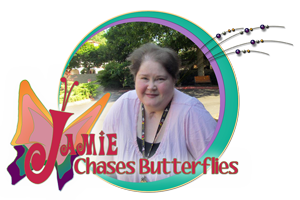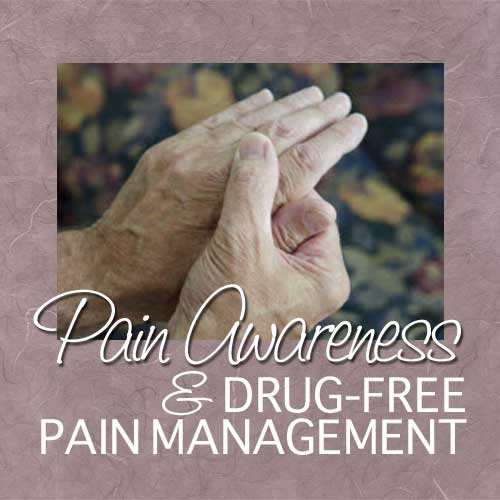September is Pain Awareness and Drug-Free Pain Management Month. Since both of these awareness campaigns are advocating the same thing: making people aware of what pain is and that there are alternative ways of living well with pain than opioid use I decided to combine these too topics.
Before I get to how living well with pain, I want to give some facts to make everyone aware of how prevalent pain is in the USA.
In 2001 Pain Awareness was established to make it known that no one is alone with their pain and to give helpful advice on how to live well without opioids. 130 American’s die each day from opioid overdoses. Eighty percent of heroin addicts began with prescription painkillers because they were suffering from pain. Chronic pain affects more people than diabetes, cancer, and heart disease combined. There are 100 million Americans suffering from chronic pain a year. That is 1 in 5 Americans. This costs Americans 635 Billion dollars a year to find relief.
…Let’s sit there and take deep breaths because I suffer from pain and I know many who do and to think of all of these facts is a bit overwhelming. There is still hope to get some help and it doesn’t have to be painkillers.
The causes of pain is unique to the person and it is a good indicator that something else is wrong with the body. Pain is supposed to be a warning sign that the body needs help but sometimes the nerve receptors are overly exerted and that gives people living with chronic pain.
Here is a list of different reasons someone might have chronic pain:
- Genetics
- Increased pain
- Being female
- Having surgery
- Being obese
- Stress
- Mood disorders
- Previous trauma
Unfortunately there are no reliable tests for pain. However, with good communication with your doctor there are tests you can run to see if there is a reason that there is pain present.
Here are some of those tests:
- Bloodwork
- Imaging: CT scan, MRI, X-Ray, and Ultra sound
- Diagnostic injections
- Electromyography
- Nerve conduction test
- Neurological assessments
- Mobility and strength tests
- Genetic testing
There are a lot of medications out there for pain that are not opioids. We are not against medications but sometimes having alternative ways of dealing with pain is a great option. I know I hate taking medication and I can imagine that many people may feel that way also. Treatments are individualized because our bodies are different in how we handle and deal with pain and treatments. That means that what works for me might not work for you. So if you hear of a treatment you want to try and it doesn’t work, don’t feel ashamed just try a different one until you find something that works for you. Below I will list alternative treatments besides medications.
Self Management Techniques:
- Activity restrictions or modifications
- Assistive devices and technologies
- Diet and nutrition (Anti Inflammation diets are recommended)
- Exercise especially strength training
- Meditation and mindfulness
- Sleep Hygiene
- Support groups
Restorative Therapies:
- Chiropractic care
- Decompression
- Hot and cold therapy
- Occupational therapy
- Physical therapy
- Pool/aquatic therapy
- Posture training
- Strength training
- Taping (Kinesiology)
Mind and Body:
- Biofeedback therapy
- Group therapy
- Meditation
- Psychiatric therapy
- Stress reduction therapy
- Talk therapy
- Virtual reality therapy
Non-invasive Interventions:
- Cold laser
- Deep Oscillation
- Electicral nerve stimulation
- External trigeminal nerve stimulation
- Functional electrical therapy
- High frequency impulse therapy
- Infrared therapy
- Interferantial current therapy
- Neuromuscular electrical therapy
- Percutaneous Nerve Field test
- Pulsed electromagnetic field
- Scrambler
- Transcutaneous electrical nerve stimulation
- Ultrasound
- Vagus Nerve stimulation
Everyone suffers from pain in their life and sometimes pain can be chronic and lifestyle changes might be needed. It sucks. It is overwhelming. It changes your life plans. I do believe that there is hope despite the pain. Pain can lead to more appreciation and gratitude in your life. It helps you choose to lovingly take care of your body and appreciate what you have more.
The Wellness Works NW Team wants to encourage you to seek help if you are suffering from chronic pain. Karen G Clemenson is a great person to have on your team because she can help you choose an anti-inflammatory eating plan that will help you along with a great strength training routine to help you with pain management. We all want to see you living well despite the pain. Remember Keep on Moving, as Karen says.
Here are some links I would like to share with you:
- Drug-Free Pain Management Awareness Month by The Unified Virginia Chiropractic Association Staff
- Drug-Free Pain Management Stop Opioid Abuse by Drug-Free Pain Management Staff
- How an Anti-Inflammatory Diet Can Relieve Pain as You Age by Cleveland Clinic Staff
- Lifestyle strategies for pain management by Mayo Clinic Staff
- September is Drug-Free Pain Management Awareness Month! by Chirotouch Staff
- September is Drug-Free Pain Management Awareness Month by Foundation for Chiropractic Progress Staff
- September is Pain Awareness Month by American Chronic Pain Association Staff
- Image Credit: September is Pain Awareness Month by Johns Hopkins Medicine Staff
- Seven Ways to Participate in Pain Awareness Month by U.S. Pain Foundation Staff
Related Articles
 Jamie Holloway is a co-owner of Wellness Works NW and she is also our Research Manager and writes our Chasing Wellness with Jamie Holloway and Dear Jamie columns. Jamie is also an Independent Wellness Advocate at dōTERRA. She lives in the Portland, Oregon area. Since October 2011 she has been sharing her Journey Toward Health and Wellness with Vasculitis through her blog at JamieChasesButterflies.com. We hope you are as inspired as we are with the raw candor Jamie uses in her writing. If you would like to help support Jamie’s writing efforts please Donate now.
Jamie Holloway is a co-owner of Wellness Works NW and she is also our Research Manager and writes our Chasing Wellness with Jamie Holloway and Dear Jamie columns. Jamie is also an Independent Wellness Advocate at dōTERRA. She lives in the Portland, Oregon area. Since October 2011 she has been sharing her Journey Toward Health and Wellness with Vasculitis through her blog at JamieChasesButterflies.com. We hope you are as inspired as we are with the raw candor Jamie uses in her writing. If you would like to help support Jamie’s writing efforts please Donate now.













